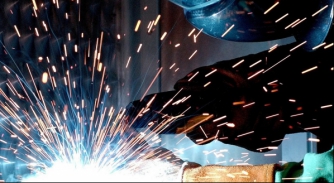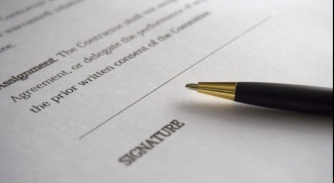We’ve got to embrace sustainable refits
The measures owners can take on their own vessels in the race to cut greenhouse gas emissions…
Yachting consultant Hein Velema outlines measures owners can take independently on their own vessels in the race to cut greenhouse gas emissions.
A growing number of large companies such as Google, Ikea and Heineken are feeling the pressure to implement sustainability policies to please their customers and investors. Their CEOs don’t want to be seen in a diesel car. Their private jets are filled up with biofuel. Soon, people will ask questions about their yachts. Refits to make yachts more sustainable will become a major trend. Owners who feel the need to contribute to a better world will be followed by those who also care about their reputation. Finally, regulations will force the rest.
The IMO’s greenhouse gas strategy calls for emissions from ships to fall by 40 per cent by 2030, pursuing efforts towards 70 per cent by 2050. Norway is the first country to implement zero-emission zones in their fjords by 2026. Other countries will follow, especially those with attractive cruising grounds. Regulations will also apply to superyachts. Attempts to exempt our industry from the new European emission regulations will fail just like the Italian supercar producers failed to escape it.
If the superyacht industry wants to keep up with the IMO targets, it cannot afford to limit the efforts to the new construction of yachts. More than 95 per cent of the current fleet will still be operational in 2030 and probably more than 80 per cent in 2050, and so the only way to achieve the decarbonisation goals of the superyacht sector is to reduce emissions of the current fleet. It’s a huge endeavour for 6,000 superyachts. How can we do that?
 Hein Velema, yachting consultant
Hein Velema, yachting consultant
Sustainable refits is the way forward. There’s one ‘easy’ way to reduce the emissions of current yachts and that’s HVO diesel. Without changing anything in the engine room, this modern synthetic drop-in fuel is believed to reduce greenhouse gas emissions by 85 per cent. This product will become available soon for the superyacht industry – but it comes at a price. It’s expected to be three to four times more expensive than the fuel normally bunkered by superyachts. The price will drop in the future but it will never be cheap. Refitting a yacht to reduce fuel consumption still makes a lot of sense to start with, and subsequently using better fuels such as HVO diesel.
There are many ways to refit yachts to reduce fuel consumption and emissions using only proven and available technology. Each measurement will contribute in a relatively small way, but it will all add up. A reduction of 40 per cent should be feasible when fully committed. As Martin Redmayne has recently mentioned across social media, we also need to talk about speed. The concept of ‘maximum speed’ of a yacht is holding us back from achieving what we want. If we optimise our yachts on normal cruising speeds, rather than maximum speeds, we can be much more efficient.
One of the first things to look at is the hull. Refits often include lengthening the yacht. Increasing the waterline makes the hull more efficient. Adding a bulbous bow, optimised for cruising speed, can help another few per cent. New propellors optimised for cruising speed rather than top speed will also help. Last, but not least, installing appendages such as the hull vane will make the hull transition complete.
Replacing the main engines with a diesel-electric propulsion system is probably too complicated, with limited results in terms of emissions reduction. Exchanging the main engines for smaller modern engines optimised for cruising speed is still expensive but can pay off. Retrofitting existing engines and adding exhaust treatment are more economical solutions.
According to Water Revolution Foundation’s latest information, yachts are in port or at anchor for more than 80 per cent of the time so it’s essential to look at the electrical systems and hotel load. Replacing generators in combination with advanced power management will reduce emissions significantly. Air conditioning is the largest power consumer and new HVAC systems can be 30 per cent more efficient and, combined with heat recovery, up to 50 per cent. But there are many more small improvements to be made such as reducing heat radiation from the sun with window foils, occupancy-based lighting and AC that detects when no one is in a room and switches off the lights and air conditioning.
Sustainable refit means more than just replacing equipment. The refit facility, the refit process, the use of materials, the disposal (preferably reusing or recycling) of old machinery and equipment are all to be taken in consideration. It’s not easy for an owner, captain or manager to do it all correctly.
Today, there are owners who are motivated to reduce the carbon footprint of their yacht. We need to be ready to help them. It would be good to have help available to look at individual yachts and make independent assessments, assisting owners to set out the right ambition level and consider options that will truly contribute.
‘Independent’ means not being controlled by shipyards, equipment suppliers or project managers. This sustainable refit helpdesk could be part of Water Revolution Foundation with the possible use of government subsidies to reduce the barrier to a great sustainable refit, cleaning up the existing fleet of superyachts.
Refit, aftersales and servicing will form the backbone of The Superyacht Forum Live - Captains Edition from 16-18 March. The Superyacht Forum Live - Captains Edition has limited places for Executive Members. If you would like to be part of The Superyacht Forum Live Tour in 2022, become part of the community and sign up as an Executive Member. Click here to learn more about the extensive list of benefits membership affords you, and follow the link to apply for The Superyacht Forum Live - Captains Edition 2022.
This article first appeared in The Superyacht Refit Report. To gain access to The Superyacht Group's full suite of content, publications, events and services, click here to join The Superyacht Group Community and become one of our members.
Profile links
NEW: Sign up for SuperyachtNewsweek!
Get the latest weekly news, in-depth reports, intelligence, and strategic insights, delivered directly from The Superyacht Group's editors and market analysts.
Stay at the forefront of the superyacht industry with SuperyachtNewsweek
Click here to become part of The Superyacht Group community, and join us in our mission to make this industry accessible to all, and prosperous for the long-term. We are offering access to the superyacht industry’s most comprehensive and longstanding archive of business-critical information, as well as a comprehensive, real-time superyacht fleet database, for just £10 per month, because we are One Industry with One Mission. Sign up here.
Related news

Resetting the lifecycle curve
How can we create a new lifecycle curve with the right kind of investment?
Business

Superyacht 2030: Is our infrastructure ready for the future?
Two titans of the sector discuss their concerns for meeting the growing maintenance demands of the fleet
Crew

One step forward, two steps back
Failing to take refit seriously by Giovanna Cabbia, Clyde & Co and John Leonida of LP Squared
Business
NEW: Sign up for
SuperyachtNewsweek!
Get the latest weekly news, in-depth reports, intelligence, and strategic insights, delivered directly from The Superyacht Group's editors and market analysts.
Stay at the forefront of the superyacht industry with SuperyachtNewsweek



